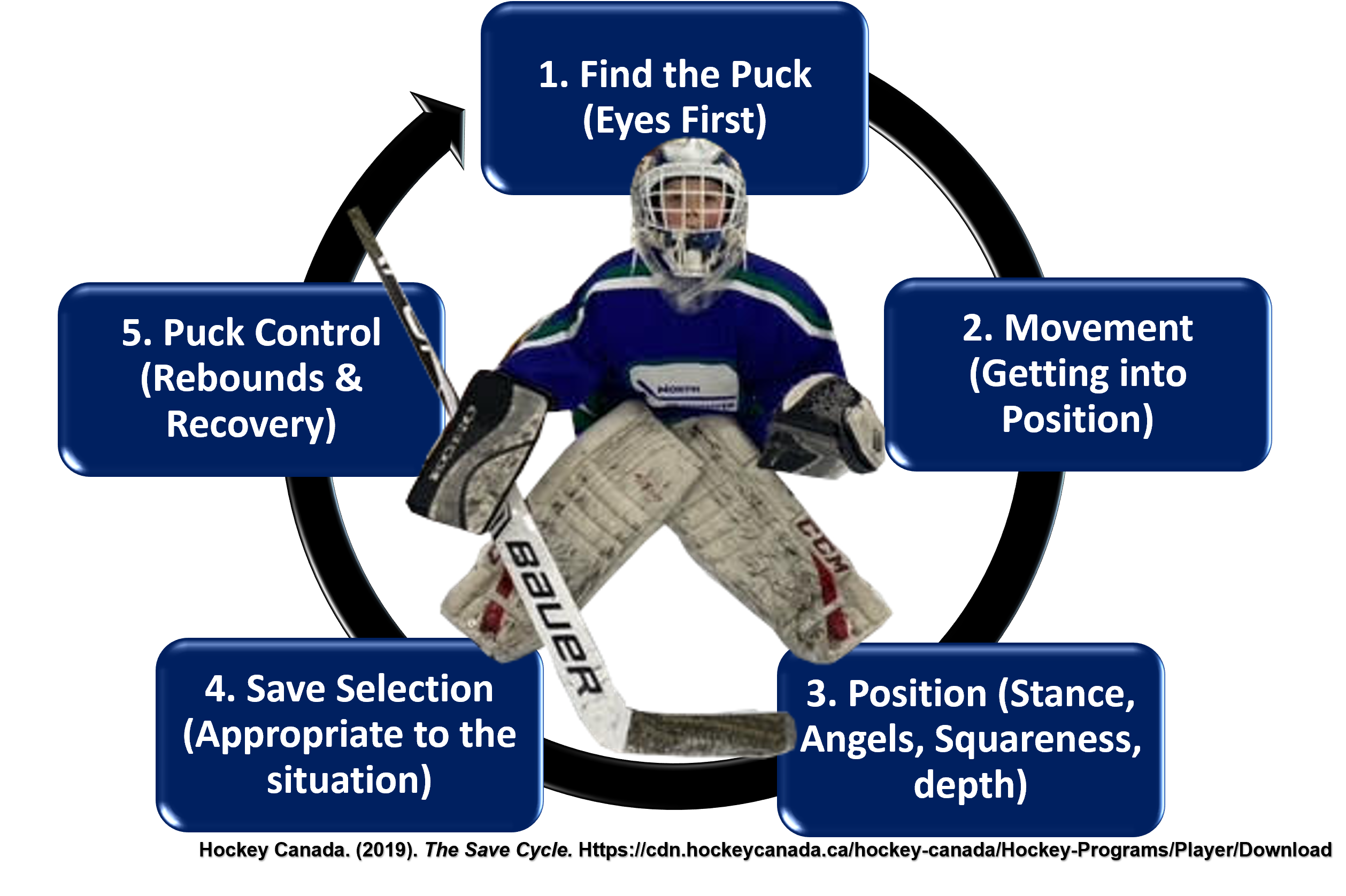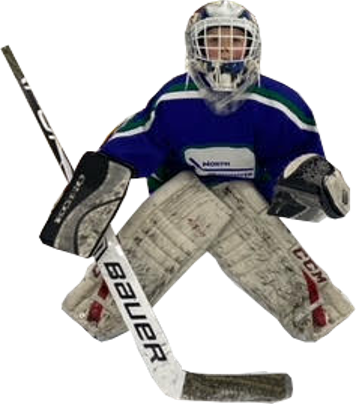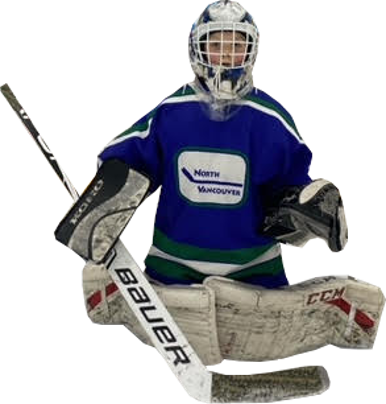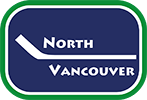GOALTENDER LEVEL I DEVELOPMENT
Welcome to NVMHA's goaltending development guide for Level I goaltenders. Goaltending is a critical aspect of team play and requires direct and consistent coaching skills to effectively develop talent.
Goaltending revolves around the concept of seeing the puck (movement/positioning) and stopping the puck through correct save selection. As stated by Hockey Canada, the foundation for goaltending is The Save Cycle consisting of (5) core development elements; finding the puck, movement, position, save selection, and puck control. Level I development should be focused on 75% movement and positional skills, 20% on save movement, and 5% on tactics.

LEVEL I GOALTENDER PROGRESSION

SKATING
Skating is important for all hockey players, but it is extremely important for goaltenders to be successful in the position. Goaltenders must start each basic movement in their stance. Each movement begins with the head and eyes into each new place of movement.
Basic Goaltender Skating:
SHUFFLE - T-PUSH- C-CUT
Goaltenders at Level I should be coached on basic skating techniques such as Shuffles, C-Cuts, T-Push, Pivot and slides through the progression of Level I. Setting aside 15 mins at the beginning of every practice for a goaltender to work on basic skating techniques is crucial in development and highly recommended.

STANCE
A good goaltender stance is an important fundamental component to being a successful goaltender and feeling comfortable in cross crease movements. Each goaltender will have their own unique stance and style of play as a goaltender. No two goaltenders are the same and should be coached accordingly.
Core components to teaching a successful goaltender Stance:
- Feet shoulder width apart
- Knees bent
- Head/Chin in front of the body
- Hands in front of the body
- Stick in front of the blocker
- Stick flat on the ice
For a goaltender to move, track the puck, make saves, control rebounds and read plays all begins with a proper Stance. The coaches resources section will provide video resources to help teach young goaltenders an efficient Stance.

POSITIONING
Goaltender positioning for young goaltenders is one of the most challenging aspects of the position. Young goaltenders struggle with angles and consistency regularly. Learning basic goaltender positioning takes patience, practice, experience and good coaching. For a goaltender to be successful, focus on net, body, and puck.
NET – BODY - PUCK
Angle: Straight line from the puck through the chest to the center of the goaltenders net. Square: Goaltender maintains shoulders, hips and toes pointed towards the puck. Depth: Is measured from the the red line (goal line) to the goalies stance.
Goaltenders should become comfortable from a young age playing at the top of their crease. Level I goaltenders should be accustom to playing at the top of their crease, while challenging shooters. A goaltender should not be more than a step from the top of their crease.

BASIC SAVES
Proper save selection is key to a goaltenders success, Level I development will introduce the goaltender to basic save selection techniques. Save selection is determined by puck location. Basic save technique introduced at Level I will be glove, blocker, chest, butterfly, and half butterfly.
Coaches teaching an incorrect save selection will limit net coverage, rebound control, and limit second-chance save ability for the goaltender. Goaltenders must be taught when to select the correct save technique. Having patience with a young goaltender is key in teaching basic fundamentals of save selection.

BASIC PUCK CONTROL
Level I introduces to the goaltender to very basic puck control skills. This will focus on the basics of the position, such as rebound control. Rebound control will focus on stick, legs, hands and chest. When and how to freeze the puck during game play.
Lastly, basic puck control will be focused on the basics of playing the puck. At this level it isn't expected a goaltender will master any of these skills, but have a brief introduction of what skills the goaltender will be required to develop as the goaltender works towards Level II goaltending.
Coaches at Level I need not worry about efficient rebound control or having expectations for a young goaltender to play the puck successfully. Coaches working on these skills must focus on the introduction and repetition of the skills. Coaches shouldn't be adding any extra pressure onto goaltenders learning the basic skills of the position in practice or in games.

